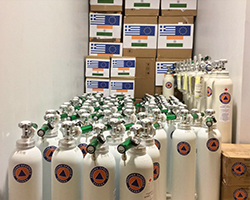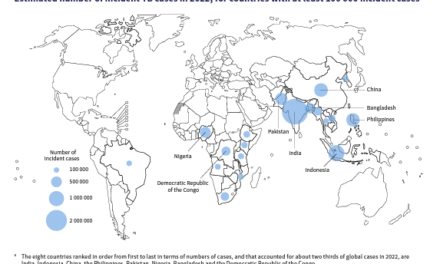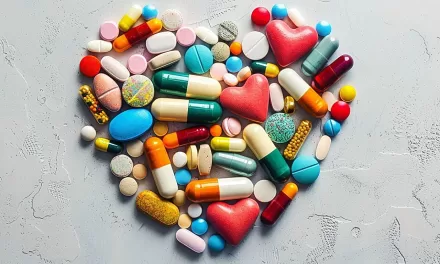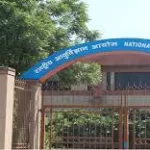
Countries across the WHO European Region are contributing to global efforts to send urgent life-saving supplies to India, following the rapid resurgence of COVID-19 in the country, which has placed unprecedented strain on the health system. Critical equipment such as oxygen concentrators, oxygen cylinders, electric syringe pumps, and therapeutics have been arriving to reinforce efforts to treat patients and save lives.
The priority is to fill critical gaps in essential medical supplies and hospital capacities.
The rise in cases in India shows that while in some countries, infections appear to be decreasing or under control, COVID-19 continues to pose a global threat that requires cooperation across borders and global solidarity in our response.
Contributing countries
Italy has sent an emergency medical team (EMT), an oxygen production plant and oxygen cylinders to India, while Uzbekistan recently delivered 100 oxygen concentrators. In addition, the Russian Federation has flown in oxygen concentrators, ventilators and other medical supplies; a special cargo flight from France brought in 28 tonnes of medical equipment; and Germany, Ireland and the United Kingdom are providing ventilators.
In addition to support from countries, a joint European Union (EU) effort to send vital supplies to India is underway.
“My thoughts are with the people of India in this difficult hour. I warmly welcome countries in the European Region coming to India’s aid, and call on them to do everything in their power to further step up their assistance. This is the solidarity across borders and regions we have been calling for. This is the solidarity that serves all of us, taking us one step closer to ending the pandemic everywhere. Bear in mind that what’s playing out in India, could play out anywhere,” said Dr Hans Henri P. Kluge, WHO Regional Director for Europe.
WHO support
In addition to individual countries’ support, WHO is distributing critical equipment and supplies to help India meet the most urgent needs. This includes 4000 oxygen concentrators, personal protective equipment, mobile field hospitals and laboratory supplies. The WHO Regional Office for South-East Asia already released 650 000 swabs and laboratory supplies in April, while 1.25 million medical respirator masks were delivered on 3 May. High performance and multipurpose tents will reach India soon to support the establishment of mobile hospitals.
An estimated 2600 WHO technical staff, from various programmes, such as polio, tuberculosis and neglected tropical diseases, have been redeployed to support health authorities to respond to the pandemic.
“The current rapid surge of COVID-19 cases has put immense pressure on the health systems, already overburdened since the start of the pandemic. We need to act with speed, expand hospital capacities and equip them with medical supplies most needed to save lives,” said Dr Poonam Khetrapal Singh, WHO Regional Director for South-East Asia, adding that it is heartening to see the support coming in from countries across the world.
No one is safe anywhere until everyone is safe
The mobilization of critical COVID-19 supplies into India is an example of the global solidarity that is required to address a global threat.
India is reporting the highest number of cases in the world, representing over 45% of new cases reported globally in the past week. As of 3 May, India has reported 20 million COVID-19 cases and almost 219 000 deaths.
Shortages of oxygen are being reported, and some hospitals and intensive care units are at capacity. Urgent national and international action is underway to address these issues.
Use all measures available to reduce transmission
The situation in India is a heart-breaking reminder that a resurgence of cases can happen anywhere in the world and that regardless of the current COVID-19 situation, the future situation will depend on our collective action or inaction.
While new reported COVID-19 cases, hospitalization and deaths have declined in the European Region, the threat of resurgence remains as long as the virus is circulating anywhere and there are sufficient vulnerable people to sustain transmission.
A combination of vaccines and strong public health and social measures offers the clearest path out of the pandemic and back to normal life.
Countries must continue to reduce transmission using all measures available. Public health and social measures such as physical distancing, the wearing of masks, ventilating indoors and avoiding crowded spaces must remain the backbone of any response.
Overview of supplies provided to India
- Belgium: 9000 doses of antiviral medicines.
- Czechia: 500 oxygen cylinders.
- Denmark: 53 ventilators.
- France: 28 tonnes of medical equipment. The French shipment included eight large oxygen plants, 28 ventilators and 200 electric syringe pumps.
- Germany: 15 000 vials of antiviral drugs, 516 ventilators and 1 oxygen generator.
- Greece: waiting to be sent: 90 oxygen tanks with a total capacity of 440 litres, as well as protective equipment through the EU Civil Protection Mechanism.
- Ireland: 700 oxygen concentrators, 1 oxygen generator and 365 ventilators.
- Italy: an oxygen production plant, oxygen cylinders and an EMT. The EMT’s main focus will be to provide and install an oxygen plant and provide COVID-19 patient management.
- Luxembourg: 58 ventilators.
- Netherlands: 100 oxygen concentrators, 30 000 vials of antiviral drugs and 449 ventilators.
- Portugal: 5503 vials of antiviral medicines, and 20 000 litres of oxygen per week.
- Romania: 80 oxygen concentrators, 75 oxygen cylinders and 20 high-flow oxygen therapy machines.
- Russian Federation: oxygen concentrators, ventilators and other medical supplies.
- Spain: 119 oxygen concentrators and 145 ventilators.
- Sweden: 120 ventilators.
- United Kingdom: oxygen concentrators and ventilators arrived 2 May.
- Uzbekistan: 100 oxygen concentrators as well as antiviral and other medicines.












